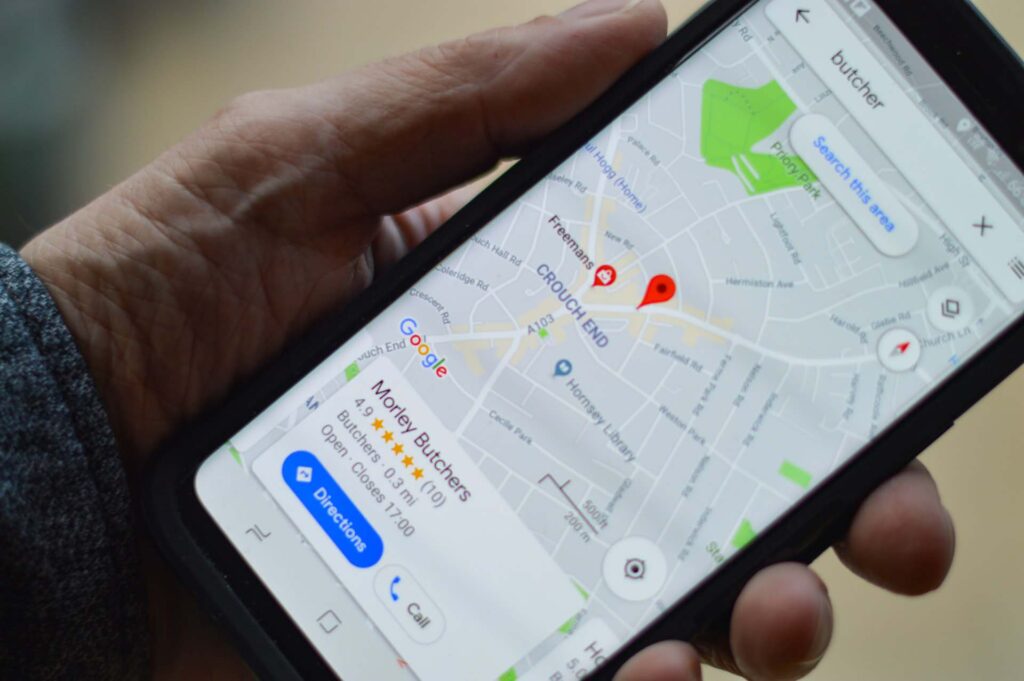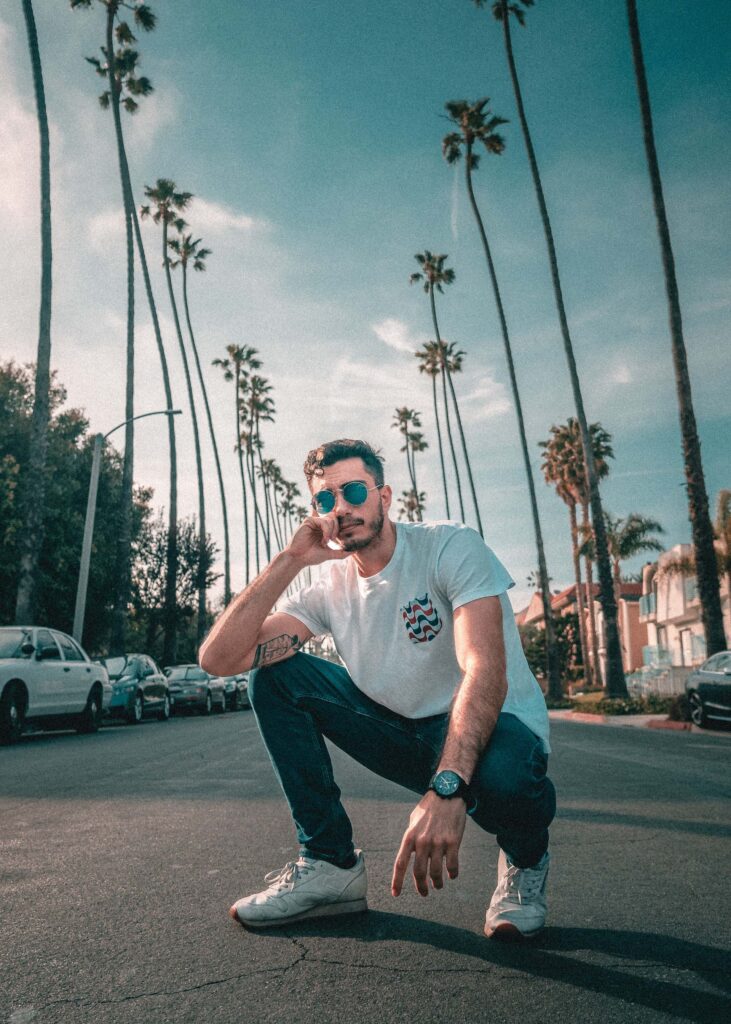Local online marketing may seem weird at first: how can something be local and online at the same time? Truth to be told, not only this is possible, but it is even one of the most effective marketing approaches you will find. In this quick guide to local online marketing, we will see what local online marketing is, how to do it, and why it is good for your business (and it is for most businesses, but all – we will see also that).
What is Local Online Marketing?
Before we dive into the how, let’s start with the what: what is local online marketing? This is a question most business owners ask. We can begin with a formal definition, and then expand from there.
Local Online Marketing represents all the marketing efforts created and consumed online, targeted at a geographically bound audience.
Now, let’s unpack it:
- Local Online Marketing represents all the marketing efforts – in this case, a marketing effort is something where you or your company put energies: people’s time, money, brand reputation, and so on, for marketing reason. That is, here we refer to all the activities you do engage with potential customers, deepen the relationship with existing customers, increase brand awareness, and so on.
- created and consumed online – this is key, because it refers to the “online” in “local online marketing”. We do not really mean any marketing effort, but only marketing efforts that your audience will consume online. In other words, creating a Facebook Ad, a TikTok video or a sponsored content with an influencer on Instagram are all great examples of marketing efforts created and consumed online. Putting up a billboard at the airport is not (unless you do some mixed and advanced campaign, for example with QR codes)
- targeted at a geographically bound audience – Online, you can reach anyone anywhere in the world. That’s plain online marketing. If we want to do local online marketing, however, we only want to reach “local people”. Therefore, not all marketing efforts done online can really qualify with our definition: only those who targets people in a local area. This is easy, because Ads platforms allow you to select who will see the ads, also based on geography.
Hopefully this explanation gave you a full idea of local online marketing. With this definition in mind, we can start to see why it is a powerful tactic: everyone uses online services, even local people, and in this way you can show your ads only to them. If you are a local service (for example a restaurant) in Atlanta GA, you don’t want to advertise to people who live in Kansas City MO as they aren’t likely to come to your restaurant after they see the ad.
Now, we can move on to see how we can go about local online marketing and implement it in a way that works for your business.
How To Do Local Online Marketing
In this section on how to do local online marketing, we will see various ways and approaches you can use if you want to reach your local customers online. Not all approaches work for all situations, but we will detail that approach by approach. In any case, it is good to read them all so that you have several tools in your belt, and then you can pick the proper one when the time is right. It is always great to know more, rather than less.
Google Maps (Organic and Paid Ads)
If you are a local business, people may search for your services on Google maps. This is true of both commodity services like gas stations and hedonic services (that target personal wellness and pleasure) such as restaurants, hairdressers, or gyms.
People use Google Maps in two ways: to find directions to some business or address they already know, or to discover new stuff. For example, when I travel to a new city and need to have lunch, I open Google Maps and see restaurants nearby, then select the one that impresses me the most (with pictures, reviews, maybe even website and so on). If your restaurant isn’t on Google Maps, it is unlikely that I will pick it – I won’t even know it exists!
In other words, if you offer services to people nearby, then you need to have Google Maps. The first step is to create a profile for your business on Google Maps. Customers may have started to leave reviews about your business before you created your profile, so a profile may be already there and you only need to claim it. Either way, this is done with a simple postcard: Google will send you a postcard with a code to your address so that they can validate you are the legitimate owner of the business. Once this is done, you can start to manage your profile.
To manage your profile on Google Maps, you need to access Google Business Profile (previously known as Google My Business, name changed in 2022). Here you can upload pictures, change opening hours, reply to reviews, add the possibility to book a table online and so on.

Once you have that, you can even go the extra mile with paid Ads. To do that, you can link Google Ads (where you pay to show up first in search) and Google Maps. At the moment, the businesses that pay to show up on Google Maps appear with a larger icon which is the first to show up when the user browse to an area. As such, you are more likely to get views. Furthermore, you can pay for conversion actions, such as every time a user asks direction to your business after having seen that. Great value for your money.
However, before you dive into paid ads on Google Maps, take the time to configure your Google Business Profile properly. If you make ads for a poorly managed profile (amateurish pictures, no description, wrong opening hours etc.), you won’t get many results.
Instagram Ads
The problem with Google Maps (or Google products in general) is that you have to wait for people to search. If you are going to a new city you may search on Google, but have you ever searched on Google if new restaurants have opened in your town? I never did, and I don’t think I will ever do that. So, how do you reach out to people who are not actively searching?
In this case, you need to sneak into their feed in a way that is effective and respectful at the same time. With this approach, local online marketing is really about “hey, look at me, I am the new kid on the block!”, what we formally call brand awareness. Of course, this is not going to work to everyone.
Making people aware of your brand will not work for every brand, and this is something you need to keep in mind when doing local online marketing. More specifically, it works for brands for which discovery can be beneficial: hedonic brands. Those are brands and businesses that exist around the sphere of pleasure. We are not talking about something people need, but something people want if they see it.
If your business appeals to some sort of pleasure, then you have a hedonic brand. Restaurants appeal to the pleasure of good food, drink, and socialization. Hairdressers, nail salons, and even gyms appeal to the pleasure of appreciate yourself and be appreciated by others. Luxury watches appeals to the pleasure of having a social status and be recognized. If you can think of any pleasure as the main reason people are driven to your business, then this strategy will work for you.

Once you realize you have a hedonic brand, you can start to put things in motion. Instagram Ads are simple: you create content (a post, a video/reel, or a story), and then put a budget to advertise it to more and more people. When you do that, you select your audience, that is, who you want to show your ad to. Here, you can select gender, age, and of course geographic area.
For example, if you have a nail salon, you can pick a female audience between 18 and 26 years old who lives 20km around your salon. The ad will show in their Instagram feed between the posts of their friends.
When doing this, remember to be consistent with the hedonic nature of your advertisement. You want to appeal to pleasure, not to need or reason. As such, make your ads engaging, visually appealing, and in general pleasant to watch and interact with. You want the ad to be an anticipation of the pleasure people will receive when buying your product or service.
Micro Influencer Marketing
This is the hardest local online marketing strategy to pull off, as it carries some risks. However, since (almost) nobody does it, if you can do that you will be have a significant advantage compared to your competition. To understand this approach to local online marketing, we need to understand influencer marketing first.
In traditional advertising on social media, you pay the social media platform (Facebook, LinkedIn etc.) to sneak your ads into the feeds of the people you pick. That works well, but it is impersonal, and it is an intrusion of privacy: people didn’t ask for your post, but they received it anyway. Even worse, privacy regulations and the increased awareness of privacy by both consumers and companies (e.g., Apple) are making this approach harder and harder.
Influencer marketing is something different: you find an influencer and pay her to produce content about your brand. An influencer is simply a person who has a significant following on a social media platform, not necessarily in terms of follower count, but in the quality of the followers. An influencer is someone people in a niche trust, and that can in fact influence their purchases or decisions.

Now, an influencer typically attracts people in their niche (e.g., make-up, videogames, corporate humor, whatever) regardless of their location. So, this may seem at odds with the local online marketing approach we advocated for so far. Yet, not all influencers are the same, so you need to find the right ones.
Normally, an influencer starts with a following of his “real life” friends, and then expand to friends of friends, and then friends of friends of friends, and so on until he becomes “famous”. You want to target people early in this climb because their followers will be more localized (as people tend to have friends close to where they live). Such influencers are typically between 5k and 10k followers on Instagram. Go above that, and they are likely to be too geographically disperse, and below that and having them make sponsored content may sound odd to their friend, so won’t work well.
What you do is that you simply reach out to them and ask them what you want: a post about your product, your brand, or whatever you need.
The challenge with this strategy is that those influencers are unlikely to be professionals in this industry. They are not expert in those collaborations, don’t know how to price themselves, and may be unreliable. This is why it is a risky local online marketing strategy, but because of that it can be one of the more rewarding you can find.
Local Online Marketing in Summary
In short, local online marketing is about using the power of online marketing to target your local customers or potential customers. You can do this by selecting your audience based on their geography, or involve a micro-influencer that is bound to a particular territory.
If you are interested in local online marketing, then be sure to read our definitive guide to successful online advertising.